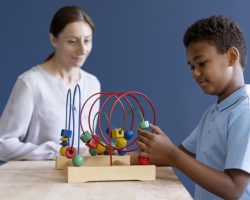Tag Archives: neurodivergents
Communication Tips for NVLD and its Neurodivergents of All Ages (Parents, teach these skills to your children!)

Communication tips for NVLD and neurodivergents :I get it—having NVLD and ADHD means facing communication challenges. But here’s the good news: those struggles have taught me so much about connection, patience, and growth. Let’s explore some simple, effective tips to make communication feel easier and more rewarding.
Do You Feel Left Out of Conversations?
Do you or your child struggle to pick up on social cues, body language, or tone of voice? Do conversations sometimes leave you feeling confused or excluded? If so, you’re not alone.
Neurodivergent individuals, including those with Nonverbal Learning Disorder (NVLD), often find it difficult to interpret verbal and nonverbal communication together. But communication isn’t just an innate ability—it’s a skill that can be learned! This guide will help you develop strategies to navigate conversations with more confidence and ease.
Communicating with Clarity and Confidence
🔹 Be Clear and Direct – Many people, especially neurodivergents, communicate best when things are straightforward. Use this to your advantage! Avoid vague language or relying on nonverbal cues. Instead, use direct communication when confused, such as: “I need your help understanding this.”
🔹 Take Your Time – Everyone processes information differently. You may need extra time to think before responding or ask follow-up questions to clarify meaning. It’s okay to pause and revisit the conversation later. Try saying: “I need to think about this more. I’ll get back to you later.”
🔹 Ask Instead of Assuming – If something feels unclear, don’t guess—ask! A simple “Did I explain that clearly?” or “How do you feel about what I just said?” can prevent misunderstandings and keep conversations on track.
Real Talk: A Quick Scenario
🚦 Situation: A friend says, “Wow, that’s a bold choice.”
🤔 Challenge: Are they being sincere, sarcastic, or just making an observation?
✅ Solution: Instead of assuming, ask: “What do you mean by bold?” or “Do you like it?” This encourages clarification while keeping the conversation natural.
Practice Makes Progress
Think about past situations where communication felt challenging. Write down possible responses in advance to use next time!
Small Steps, Big Wins
💡 Social skills improve with practice! The more you use these strategies in daily conversations—whether with family, friends, or coworkers—the more natural and confident you’ll feel in social interactions
.
NVLD Expert Linda Karanzalis, MS, BCCS

 Linda Karanzalis, MS
Linda Karanzalis, MS
Linda Karanzalis, MS, is a former special education classroom teacher with over 25 years of experience in learning disabilities, ADHD, social-emotional learning, social skills training, and behavior management.













